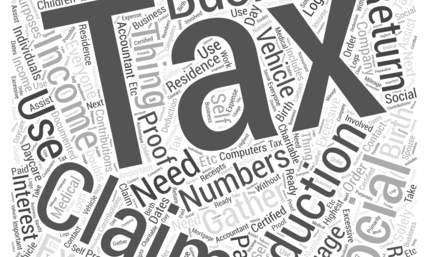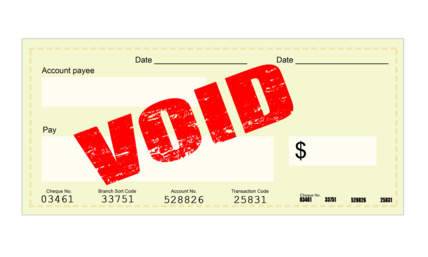A Guide on How to Change Your W2 Wage
Filing your federal income tax return requires a pile of forms, one of which is a Wage and Tax Statement, or W2 form. This form contains information on an individual’s annual wage and the taxes withheld by their employer. Thanks to the Current Tax Payment Act of 1943, full-time employees need only request a copy of their W2 forms from their employers.
But as necessary as it is, a W2 form is still a piece of paper, vulnerable to being misplaced or destroyed by accidents or the elements. Sometimes, oversight on your employer’s part means you don’t have a form on hand come tax time. You only have your last few pay stubs as your certifiable proof of income.
Fortunately, the Internal Revenue Service (IRS) provides an alternative measure if getting a W2 form is impossible at the moment. This involves filing another IRS form called Form 4852, known as a W2 or Form 1099-R substitute. This in-depth guide will explain how to have an alternative W2 in time for tax season.

The Substitute At A Glance
A Form 4852 is two pages long, but the first page contains all the necessary entry fields to fill. The rest includes general instructions on its use.
-
Name as displayed on tax return
-
Complete address
-
Tax year and the missing form in question (W2 or 1099-R)
-
Employer or payer’s contact info (name, address, and zip code)
-
Employer or payer’s Taxpayer Identification Number (if known)
-
Wage and tax details as shown on W2 (if the W2 is missing)
-
Wage and tax details as shown on 1099-R (if the 1099-R is missing)
-
Explanation on determining the particulars filled in Line 7 or 8
-
Explanation on efforts to obtain a W2 or 1099-R before the deadline
Before using this form, the IRS insists that you exhaust all efforts in securing the necessary tax forms. For W2 forms, the employer is responsible for issuing them to their workers before the end of January (if it falls on a holiday or weekend, the deadline moves to the next business day). If you haven’t received one past the deadline, contact the IRS for assistance.
On the other hand, 1099-R forms are a bit harder to furnish. As 1099 forms in general are for non-traditional employees (i.e., freelancers, independent contractors), the individual is therefore responsible for filing it. In this case, the form pertains to any income of USD$10.00 or more from annuities and retirement accounts.
It’s not like you can pick up this form on your own. Once the IRS determines your case to be reasonably valid (usually after calling the erring employer), they’ll ask for your missing form. Meanwhile, they’ll also send you a copy of Form 4852 to fill out personally. Once completed, attach this form to your annual income tax return and file it before the April 15 deadline.

Other Credentials Required
Filling out this form without other income credentials on hand is ill-advised. Documents like pay stubs can help complete the fields that require you to declare your income and taxes, specifically Line 7 or 8. While the IRS understands that the amount won’t necessarily be exact, they can do a thorough background check and spot something amiss.
For a Form 4852 in place of a missing W2, the IRS recommends basing your income and taxes on one of two documents: your most recent pay stub or your W2 form from the previous year. For pay stubs to work, they must contain at least information on year-to-date wages, periodic wage rates (how much per week or month), and details on deductions.
Meanwhile, for a previously filed W2, the figures to provide on Form 4852 must match the length of work done for the tax year. For example, if someone worked for a full year in the previous tax year but just six months in the current one, the computation for Form 4852 should only be half of the declared figures in the old W2.
You might ask, “Why not just give them the pay stub with the tax return?” There are two reasons for this: (1) pay stubs aren’t official IRS documents; and your salary doesn’t essentially mean your W2 amount. The difference in both figures isn’t unusual, attributed to three aspects:
-
Year-end pay stubs also show non-taxable income sources, such as gifts, disability wages, and income earned in states with no income tax.
-
Contributions made to company-sponsored retirement plans like 401(k) accounts are non-taxable but reported in pay stubs.
-
Pretax deductions, like premiums for company health insurance, are reported in pay stubs but deducted from gross income before any tax withholding.
As for a stand-in for a missing 1099-R, a previous 1099-R can work, provided that the amount you receive this year is relatively the same as last year. If such a form lacks complete and correct information, ask your plan trustee to provide you with a distribution statement.
Crunching The Numbers
Doing the math even with supporting documents on hand may seem intimidating. However, the general instructions printed with the form provide detailed explanations on what figure to write on the sublines under Line 7 or 8.
The process basically narrows down to five crucial steps:

-
Gross Income
Lines 7a and 8a show your total wages from taxable and non-taxable sources, practically your gross income. To get your gross wages, calculate your periodic wages based on the published rate. If it’s monthly, multiply that wage rate by 12; if hourly, multiply it by how many hours they work a week, then multiply it by 52.
Calculating gross distribution is a bit easier: divide the amount you receive (net distribution) by the withholding tax rate (decimal form). Aside from the taxable income, your tax bracket also depends on your social status (if married, filing joint or separate). You can check out the 2021 tax table here.
If you earn from other ways, like tips and compensation, include them into the gross income. In Line 8, if the gross distribution shown is also a total distribution, check the box on Line 8d.
-
Non-Taxable Income
Even if the IRS doesn’t touch it, they still require taxpayers to report non-taxable income sources in their tax returns. Once you calculate your gross income, subtract it by the sum of all non-taxable income.
For filing 1099-R substitution, Form 4852 grants the option to declare the taxable amount as indeterminable for valid reasons. In this case, leave Line 8b blank and check the box on Line 8c.
-
Deductions
As explained earlier, pay stubs report pretax deductions and non-taxable income sources. Pretax deductions are taken from the gross income, which the employer typically does in calculating the payroll, reducing a worker’s taxable income. Some examples include:
-
Healthcare insurance
-
Disability benefits
-
Child care expenses
-
Retirement funds
-
Tax-deferred investments
-
Commuter benefits
-
Parking permits
-
Annual Taxes
The majority of the sublines under Lines 7 and 8 require the annual computation of withheld taxes from various sources, namely federal, state, and local taxes. Your pay stub or previous W2 form should show this, so all you need to do is calculate it the same way you did to get your gross income.
Keep in mind that not all areas in the U.S. collect income taxes. While tax collection on the federal level is inevitable, nine states currently don’t collect income tax.
-
Alaska
-
Florida
-
Nevada
-
New Hampshire
-
South Dakota
-
Tennessee
-
Texas
-
Washington
-
Wyoming
-
W2 Income
With all necessary figures determined, calculating your W2 income is as simple as getting the difference between post-deduction gross income and taxes. If the result doesn’t match the ones published on the pay stub or previous W2, run the numbers several more times.

Late Arrival
Imagine managing to file your tax return with your Form 4852 on time, only to receive a copy of your missing W2 from work. If this happens to you, get your copy of Form 4852 and scan for inconsistencies. Depending on how much of your tax return would change when correcting these mistakes, you may need to file a Form 1040X.
Known as the Amended U.S. Individual Income Tax Return, Form 1040X enables changes to be made to a return filed for a specific tax year. The form is three pages long and requires the initial and the correct amount declared, not to mention a detailed explanation for filing this form (supporting documents are necessary).
Remember that this form is only necessary if you miss out on deductions or tax breaks, either of which can change your taxable income. There’s no need to file this form if you made a couple of miscalculations; the IRS will take care of those. Also, there’s no need to use this to follow up on your W2 submission.
Conclusion
Losing your all-important documents to corporate oversight or natural disasters can be a hassle. Fortunately, the IRS understands such situations and allows for filing substitute documentation. Nevertheless, it pays to be accurate about your numbers.















